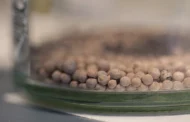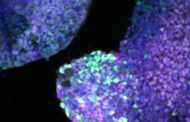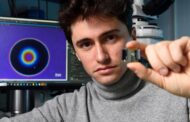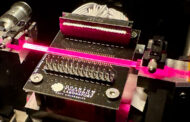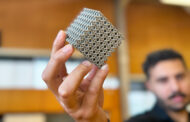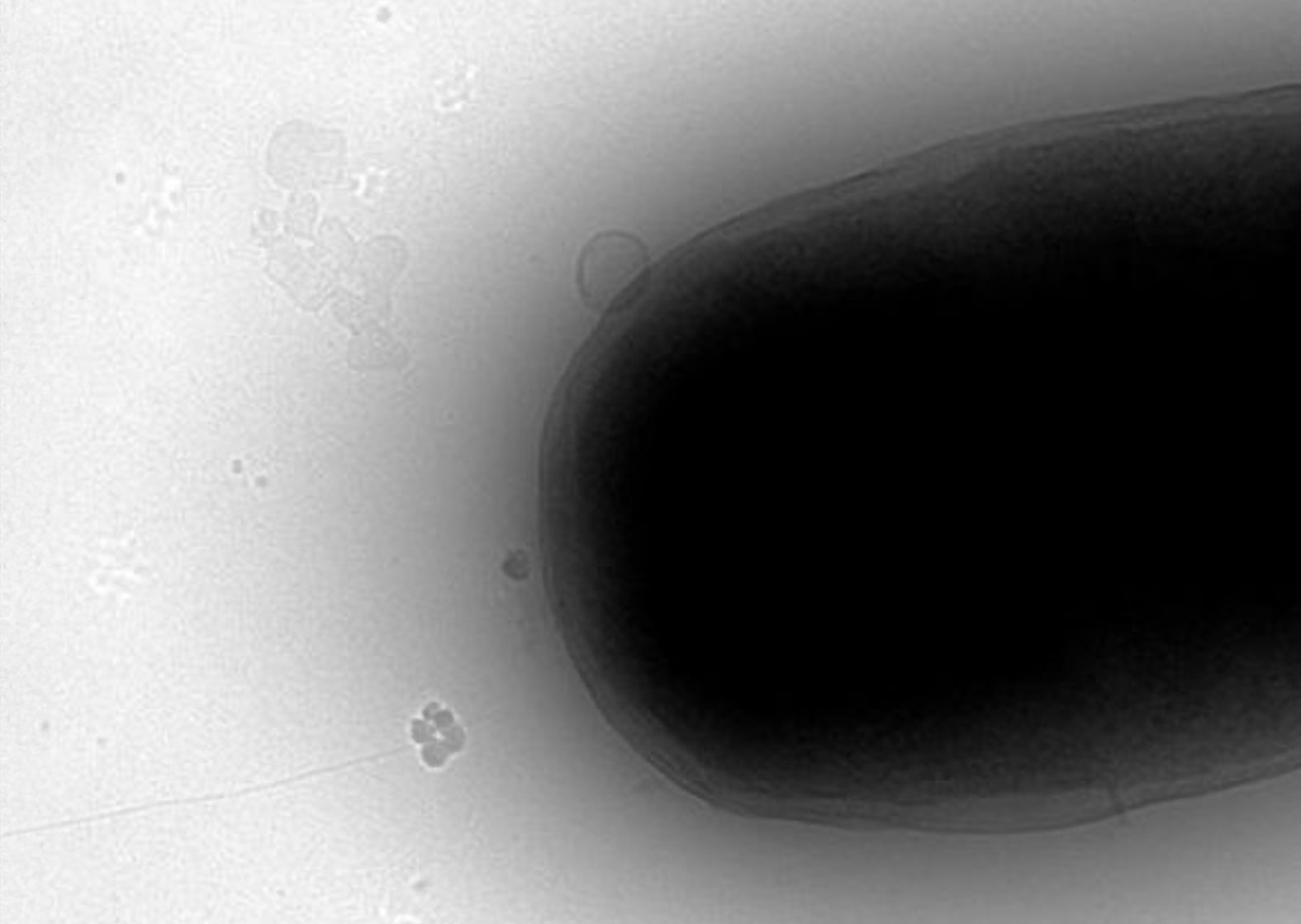
Plasmid DNA entering the E. coli cell after exposure to 18GHz electro magnetic energy.
Credit: Bio21 Institute.
Scientists from Australia and the United States have found a new way to alter the DNA of bacterial cells – a process used to make many vital medicines including insulin – much more efficiently than standard industry techniques.
Instead of opening bacteria cell walls with harsh chemicals or high temperatures to insert DNA, the team used high-frequency radio waves, a much gentler approach that led to many more of the cells taking on the DNA and surviving.
The study, led by RMIT University in collaboration with other Australian universities and WaveCyte Biotechnologies in the US, used radio waves at the 18 gigahertz frequency to temporarily ‘open the gates’ in E. coli bacterial cell walls long enough for genetic material to be inserted.
The cells then closed and continued healthy function.
Radio frequencies can be used to carry everything from mobile phone and satellite data to the energy needed to manipulate bacterial cells in a lab.
Earlier joint work with the Australian Centre for Electromagnetic Bioeffects Research demonstrated how high-frequency electromagnetic energy temporarily makes bacterial cells more permeable.
This latest study published in the high-impact journal Nano Letters takes that work a step further by showing the method can be used to safely deliver DNA.
The team’s results showed the process to be highly efficient: 91% of the E. coli cells took on the new DNA after exposure to 18GHz radio waves for three minutes.
Using the current industry standard for inserting DNA, known as ‘heat shock’, only 77% of the cells take on the DNA and many of those die soon after from the heat exposure. Gentler laser pulse techniques exist but less than 30% of the cells take on the new DNA in that process.
Lead author, RMIT Distinguished Professor Elena Ivanova, said their approach trumped both by being both highly efficient and gentle.
“Our novel, cost-effective method is shown to be highly efficient, but also gentler on the cells as no harsh chemicals or high temperatures are used in this process,” said Ivanova, from the School of Science.
“As a result, the cell survival rate was higher than other techniques.”
The team’s research has also shown this process works in eukaryotic cells – the type we share with animals, fungi and plants, including PC 12 cell line models commonly used in neuroscience research.
“Our focus now is on translating these findings,” Ivanova said.
“We have only scratched the surface of the wide range of drug delivery applications this approach could have in microbiome therapeutics and synthetic biology.”
RMIT has applied for intellectual property protection for the technique jointly with WaveCyte Biotechnologies, a US company specialising in developing cell and gene therapy technologies.
WaveCyte CEO Dr Steve Wanjara said they were deeply committed to advancing this technology, having partnered with RMIT from the outset.
“This gentle and highly efficient method holds immense promise for enhancing the affordability and accessibility of critical therapies,” Wanjara said.
“We continue to actively work towards translating these findings into tangible applications, focusing on optimizing the technique for mammalian cells. This research has the potential to positively impact millions of lives across the globe, and we are dedicated to making it a reality.”
Study first author, Dr Tharushi Perera from RMIT and Swinburne University, said developing this new application and shedding light on useful aspects of high frequency electromagnetic energy was “hugely satisfying”.
“People hear electromagnetic energy and 5G and think it’s bad – possibly due to misinformation or lack of understanding – but, as we have shown here, there are actually beneficial applications,” she said.
“My hope is that this can open the door to new life-saving treatments in the long run and look forward to seeing its development.”
Original Article: Radio waves can tune up bacteria to become life-saving medicines
More from: Royal Melbourne Institute of Technology | Swinburne University
The Latest Updates from Bing News
Go deeper with Bing News on:
Drug manufacturing method
- Scientists learn from caterpillars how to create self-assembling capsules for drug delivery
Self-assembling molecules that spontaneously organize themselves to form complex structures are common in nature. For example, the tough outer layer of insects, called the cuticle, is rich in proteins ...
- Drug Shortages Compounded by Lack of Information, Transparency
A lack of information on drug shortages can make it difficult to identify and respond to shortages appropriately, but improving supply chain transparency and federal oversight could reduce or prevent ...
- New method could cut waste from drug production
Scientists have developed a sustainable new way of making complex molecules, which could greatly reduce waste produced during drug manufacturing, a study suggests.
- FDA rejects Abeona cell therapy, asks for more manufacturing data
The complete response letter for Abeona’s treatment is one of several manufacturing setbacks for cell and gene therapy developers in recent years.
- The Changing Manufacturing World: Sustainability, Continuous Improvement And Technology
Plant management executives should adopt a continuous improvement program (CIP) that includes people at the center of the manufacturing process.
Go deeper with Bing News on:
High-frequency electromagnetic energy
- Ansys and TSMC Enable a Multiphysics Platform for Optics and Photonics, Addressing Needs of AI, HPC Silicon Systems
Ansys and TSMC deliver a high-fidelity multiphysics solution to address design challenges for artificial intelligence (AI), datacenter, cloud, and high-performance computing (HPC) chips The combined ...
- Gravitational Wave Detection: How Earth, Jupiter Could Unravel Cosmic Mysteries
A group of scientists believed that Earth and Jupiter could be used as laboratories that would help convert gravitational waves into light particles.
- A&I Power Group’s Path to Success: From Power Generation to Electromagnetic Innovation
When it comes to energy technology, A&I Power Group emerges as a beacon of innovation. Founded by two visionaries, Alexis Herrera and Iyad Baghdane, the ...
- Long-distance and low-attenuation magnetic energy focusing technology for deep-tissue wireless powering
Self-powering supply involves the conversion of endogenous energy in the ... Compared with other high-frequency technologies, such as the photovoltaic and electromagnetic effects, the ULFMEF ...
- Scientists develop high-boost and high-efficiency DC power converter
They managed to combine high-frequency switching (about 10 ... that our snubberless design has much reduced electromagnetic noise and a high energy efficiency of up to 91.3%, which is ...



